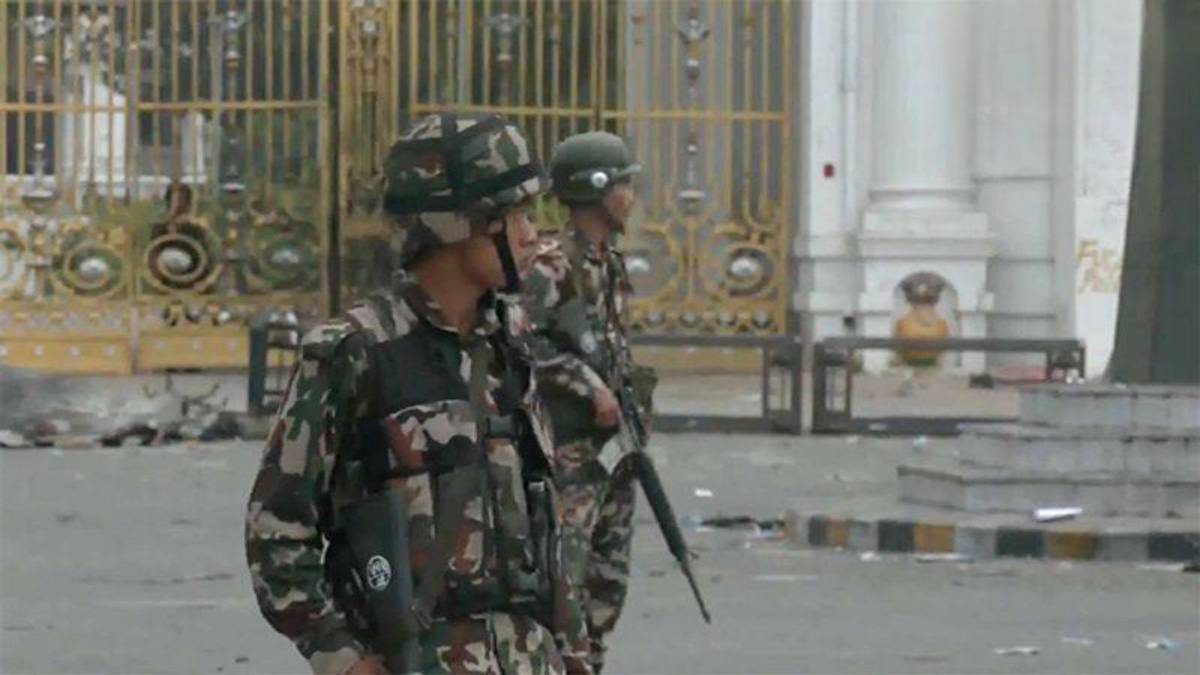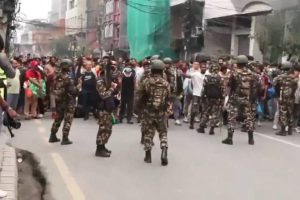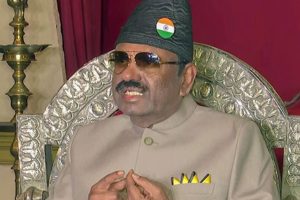The Nepal Army on Wednesday extended prohibitory orders and announced the continuation of a nationwide curfew as violent Gen Z-led protests against corruption and restrictions on free speech spread across the country.
In a statement, the Directorate of Public Relations and Information said prohibitory orders would remain in force until 5:00 pm today, followed by a nationwide curfew from 6:00 am on Thursday, Bhadra 26 (September 11). Future decisions will be taken based on the evolving security situation.
Expressing condolences for the lives lost and property damaged, the Army urged citizens to cooperate with security forces in maintaining order. It warned that “lawless individuals and groups” had infiltrated the movement and were engaging in serious crimes, including arson, looting, violent assaults, and attempted rape.
“As various groups are committing vandalism, arson, looting, violent attacks, and attempted rape in the name of the movement, the curfew will remain in place across the country until further notice,” the statement said.
The unrest, which began on September 8 after the government banned 26 major social media platforms citing tax and cybersecurity concerns, has escalated rapidly. At least 19 people have been killed and 500 injured in clashes with security forces.
President Ram Chandra Paudel, who accepted Prime Minister KP Sharma Oli’s resignation on Tuesday, is expected to meet protest representatives today in an attempt to defuse the crisis through dialogue.
Calling for restraint, the President urged all sides to avoid further bloodshed.
“In a democracy, the demands raised by citizens can be addressed through dialogue and negotiation,” his office said in a statement quoted by The Himalayan Times.
The protests—led largely by students and young citizens—have been fuelled by anger over institutionalised corruption, nepotism, and deepening inequality. Public frustration was heightened by the “Nepo Babies” trend on social media, which exposed the lavish lifestyles of political elites’ children, contrasting sharply with Nepal’s jobs crisis that drives nearly 5,000 youths abroad daily.





